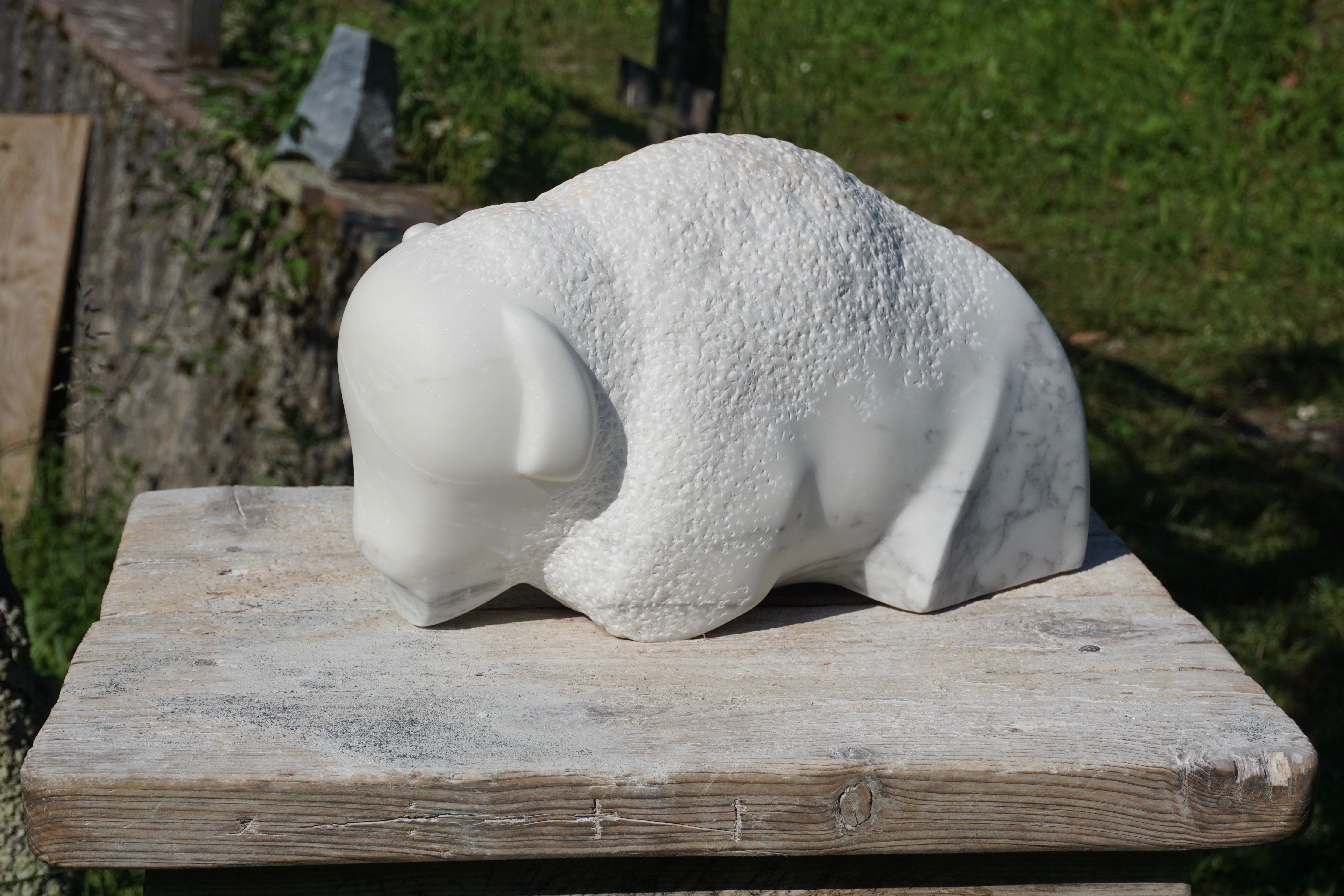I wanted to carve a buffalo. Why a buffalo? Well, I wanted to attempt a figurative sculpture rather than something abstract (a decision I would later learn that was likely a more difficult path for a first timer). The simplest answer would be because that’s where I from – Buffalo, NY. It’s a city that requires strength of its residents (think cold winters, historically challenging economic cycles and heartbreaking sports teams) and the place that played a big part in shaping who I am. The animal reflects this strength in its large head, horns and muscular back. The buffalo is also a symbol of the national parks where I love to spend as much time as possible and have served on a non-profit board in support of the parks for the last few years. Finally, as an animal that once numbered in the tens or even hundreds of thousands but now exists only within the protection of our parks, the buffalo represents a wasted natural resource. More efficient use of our natural resources (first energy and now water) is a theme that I’ve focused my professional career around. So there you have it, a buffalo.
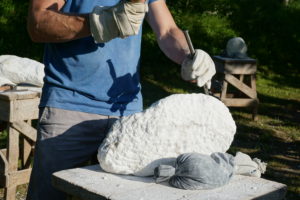
The first step of working with a riverstone is to “skin the stone” by removing about a centimeter of the outermost layer of the stone. The practical objective of this is to peel away the damaged stone that has been bruised and cracked over the (in this case, 200+) years. But as importantly, this process allows the stone to start to reveal itself to you – the quality of the stone, any colors or impurities, or strong lines or shapes. The technique is to use a single-point chisel to chip away the stone without creating new damage to the stone which, I would learn, leads to a lot of extra work to remove the dings and bruises in later stages.
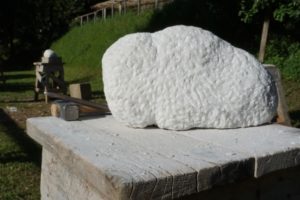
Once the stone has been skinned, it’s time to work to find the form. For me, this was where my “negotiation” with the stone began. The overall shape of the stone I had selected was still there but there was a clear curved ridge and some lines of impurities that I had not seen previously. This forced me to re-think the design I had in mind and to abandon my “safe zone of symmetry.”
Identifying the overall form leads to additional shaping, mainly with the single point chisel and a 4-toothed flat chisel. This was where I spent the majority of my time. It proved to be a nearly endless iterative process for me – seeking to find the right proportions, integrating the natural curves or shapes of the stone into the buffalo and shaping the stone. It was a
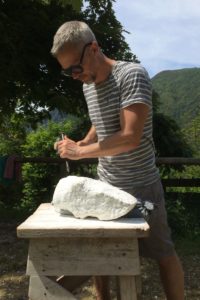
challenge to think in 3-dimensions (some students did have clay models that they had produced which could be helpful…if you’re good with clay) and to attempt to integrate some motion or action into the form. It turns out that I actually could visualize pretty well where I needed to remove the stone but that I was always too conservative with my cuts, resulting in having to rework an area three, four, five times.
And finally, when the form and the shape are complete, it’s time to work on the detailed shape (I used a smaller 4-tooth chisel) and the surface. I had wanted to incorporate two different textures to contrast the thick fur on a buffalo’s back with the smooth hair on the rest of the body. Here, I used a smaller single point chisel to create the rough texture and two grades of sanding stones (32, 60) and four grades of sandpaper (60, 120, 180, 220) for the smoother surfaces.
After 72 total hours of time on the stone (roughly 62 with the tools and 10 sanding the surface) and an estimated 510,000 hammer strokes, here is what I was able to produce.
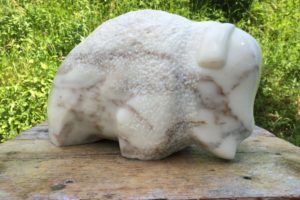
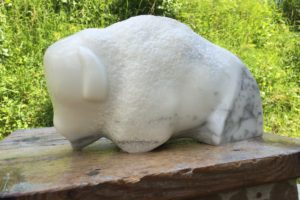
There are no exhibit dates yet and no offers to buy, but I’m really happy with what I was able to create. I really enjoyed the process, particularly the selection of a stone from the river (vs. a pre-cut piece of marble from a yard). It was hard work physically and wasn’t without frustration. But, it was incredibly satisfying to set the chisel, strike with the hammer and see the piece of stone that I wanted to remove actually come off. In the end, my piece is probably about where I expected it to be on the spectrum between figurative and abstract. I think (hope) that there is sufficient detail in the proportion of the shape to convey the strength and power of the buffalo, and enough lines and tension to communicate the action.

I’d like to say a big thank you to my entire family for allowing me a full two week period to focus on this and another specifically to Jessica for encouraging me to try it. I really hope that I’ll be able to find a way to continue when we return to LA.
